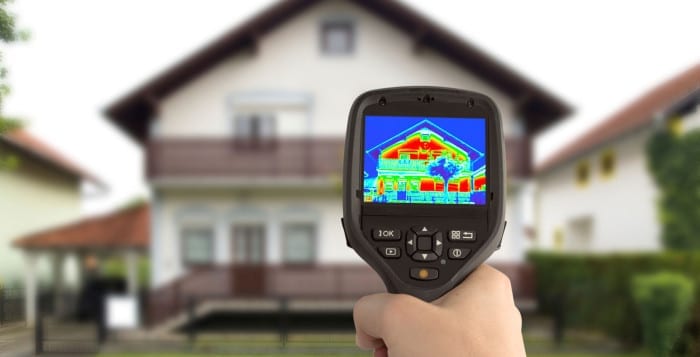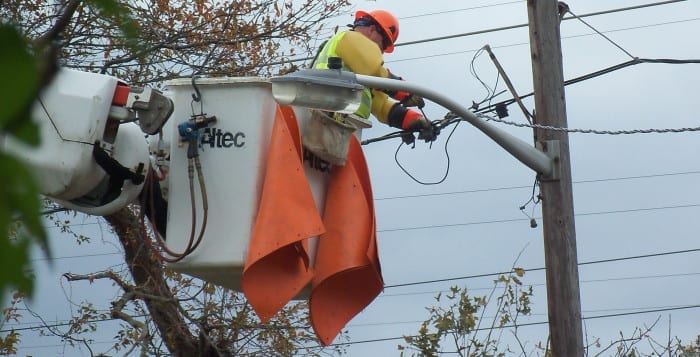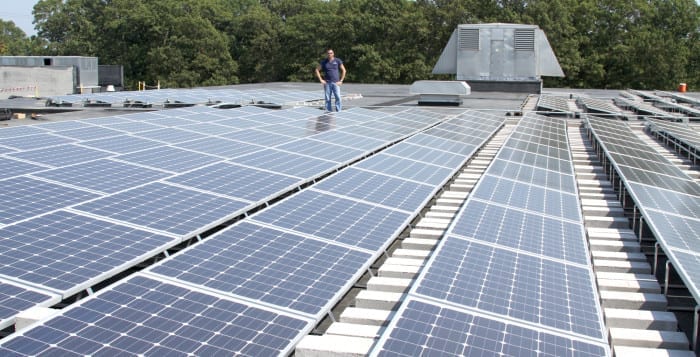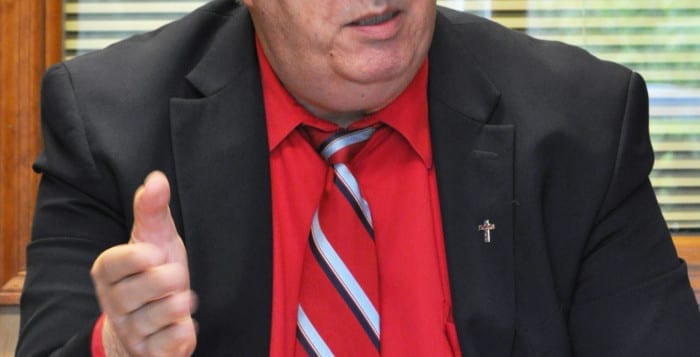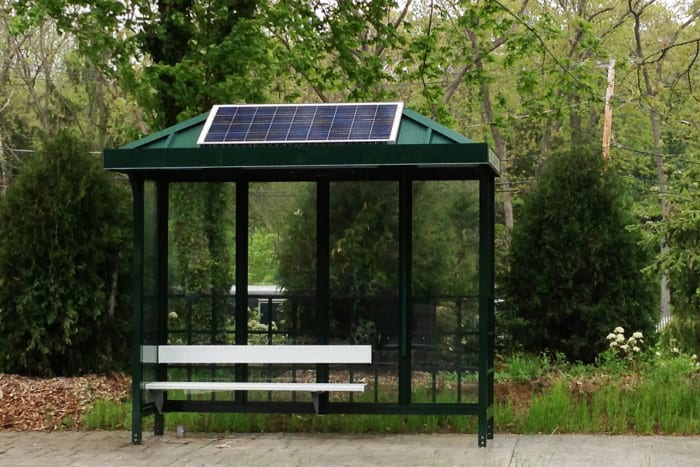It just got easier for homeowners on Long Island to monitor their energy costs.
The not-for-profit Long Island Green Homes Initiative is a public-private partnership that launched Nov. 10 with the goal of setting up homeowners with a professional energy audit at no cost. The program links residents with the state’s Energy Research and Development Authority to generate savings, stimulate jobs, boost economic development and promote sustainability, organizers said.
The initiative is headquartered at the Sustainability Institute at Molloy College and is partnered with three non-profits: Community Development Corporation of LI, LI Green and United Way of Long Island. A state program that offers similar services has been in effect for several years, but some said it wasn’t getting its message across to enough people.
Neal Lewis, executive director of the Sustainability Institute at Molloy, said some residents argued that the state government website was too confusing to use.
“The conclusion was that the key way to get more participation was to provide resources to homeowners to help navigate the process,” Lewis said.
That was how the Green Homes Initiative was born.
It started with the goal of providing an easy-to-use website coupled with energy navigators who help answer any questions a homeowner has. Lewis said the energy navigators then schedule a free home energy assessment that provides an in-depth analysis of a home’s energy efficiency for each homeowner.
It was crafted after similar programs in neighboring municipalities, but has tweaked pieces of the process with hopes of making it better, supporters said. In an earlier version of this program started in 2008 in Babylon, an average homeowner saved about $1,000 each year in energy costs, according to a press release.
LIGH has also partnered with five towns, including Huntington and Smithtown along the North Shore, to further encourage residents of those towns to take advantage of this program.
“I am proud this newest LI Green Homes Initiative is kicking off in Huntington Station,” Huntington Town Supervisor Frank Petrone (D) said in a statement. “This is a prime example where much of the housing stock dates before the first energy conservation codes were adopted in the 1970s and can benefit dramatically by upgrading insulation and heating systems that are at or near their useful life expectancy.”
Huntington Councilman Mark Cuthbertson (D) said this program incurs few out-of-pocket expenses for homeowners.
Many improvements that require homeowner investment are eligible for cost reductions of up to 50 percent, depending upon household income, according to Cuthbertson.
In an interview, Lewis said the only contractors providing the free home energy assessments were licensed, local, insured, and certified by Building Performance Institute. The contractors test a house’s insulation, heating and hot water systems, ventilation and more.
Once the tests are completed, the homeowner is given a comprehensive report that includes where and how their home can save energy, a fixed cost for each recommended improvement, and projected dollar savings on their utility bills for each recommended improvement.
If a homeowner decides to go ahead with those suggestions, the program would then assign them a performance specialist to do the work on their property.
The LIGH program can pay the entire cost of the improvements, and under a contract with the homeowner, the town sets up a monthly payment plan, Lewis said.
LIGH also structures the payment so that your savings cover your monthly bill. If a homeowner saves $100 a month on energy costs, they only owe the town $90 a month.
“We’re trying to get people to test their homes and make them more energy efficient,” Cuthbertson said.
The Initiative is funded for three years by a Cleaner, Greener Communities competitive grant award from NYSERDA of $2.3 million, and a supplemental grant from the Rauch Foundation in Garden City.

